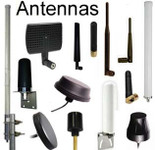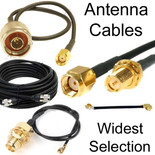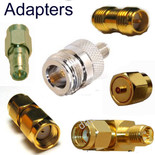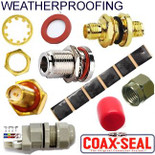LoRaWAN Gateways: Bridge and router for Long Range IoT Networking
LoRaWAN Gateways: A Comprehensive Guide
LoRaWAN gateways or LoRa gateways are radio devices that provide bidirectional connectivity between end nodes such as sensors and IoT devices and the internet. They operate using Long Range (LoRa) wireless networking technology and are a key component of Long Range Wide Area Networks (LoRaWAN).
LoRa technology is owned by Semtech and developed and overseen by the LoRa Alliance which include industry stakeholders that use the LoRa chipsets and networking protocol in a variety of applications.
LoRaWAN gateway is a critical wireless networking component for connecting end nodes to the Cloud-based applications that control them. LoRa gateways have been demonstrated to provide a low-cost and reliable solution for IoT connectivity with several proprietary IoT networks using these devices. IoT devices can use cheaper, low-energy LoRa to transmit their data as far as the nearest gateway. The gateways can receive the data and forward it using higher energy and bandwidth networking like WiFi, cellular, and Ethernet.
LoRa gateways: Bridge and router for IoT
LoRa gateways can acquire and concentrate LoRa signals that are transmitted from IoT devices, with a single LoRaWAN gateway being capable of supporting thousands of devices. They act as a bridge or router for LoRa based IoT devices in their vicinity. Their coverage is significant, being able to pick up transmissions from a distance of over 4.8 kilometers (3 miles) in urban areas and 16 kilometers (10 miles) in remote or rural areas that are free from obstruction. The gateways' antenna can be upgraded to a long-range LoRa antenna that can receive LoRa signals in one of three unlicensed frequency bands (depending on region) as well as WiFi, cellular, or Ethernet connectivity for onward transfer of received data to the wider network. Any message received is forwarded on with duplicated messages deduplicated by the receiving network.
Typical LoRaWAN gateway component
The LoRa antenna is used to passively capture signals from end nodes and transfer the data via an SMA cable connected to the SMA-female connector on the gateways radio board. Indoor LoRa gateways are typically supplied with articulating dipole antennas with a gain that is 3 dBi or under. These antennas can be detached from the gateway via the SMA connector and replaced with more powerful external LoRa antennas or a short run of coaxial antenna cable to an outdoor antenna for greater coverage.
-
SMA connector
Indoor LoRa gateways usually carry an SMA connector (Nb. Helium gateways/miners usually have an RP-SMA connector, so you would use an RP-SMA cable to connect to the antenna.) The SMA connector is edge mounted on the gateways radio board. Outdoor LoRa gateways almost always carry the larger and more rugged N connector. GPS, WiFi and cellular RF connectors (usually SMA) alongside the LoRa antenna connector.
-
Radio board
This PCB provides the paths for RF signals that are received from the LoRa antenna and conducted through the SMA connector. Received signals move through a single-pole double-throw (SPDT switch) which creates two RF outputs that are filtered according to frequency and conducted to the Semtech SX1257 transceiver modules.
-
Semtech SX1257 transceivers
For LoRaWAN connectivity gateways will carry Semtech LoRa chipsets. These LoRa transceivers are responsible for demodulating the received signal and concentrating it.
-
SX1301 digital baseband chip
The concentrated signal is then transferred to a digital baseband chip, the SX1301, for further signal processing and transfer to the LoRa gateway core board.
-
LoRa gateway core board
This PCB contains a microchip micro-controller and is concerned with receiving the data that is transferred from the radio board, forwarding packet information for Ethernet transfer. The core board is able to wrap the data into a JSON structure for transfer to the network servers through Ethernet cabling. Alternatively, if the gateway model allows the forwarded data packet can be transferred using a WiFi module or cellular modem on board.
-
GPS module
Various models of LoRa gateway also carry a GPS module that can provide positional and chronological data for the unit. This data is acquired via the radio board and processed, packaged and forwarded via the core board.
-
Power module
Low-voltage power can be supplied to a LoRaWAN gateway via on-board micro-USB, USB, AC, DC, or PoE ports. The radio board and core board are usually protected with surface-mount fuses for overcurrent protection.
LoRa gateway components are housed in enclosures that are suitable for the environment where they will be installed, with outdoor LoRaWAN gateways housed in ruggedized durable enclosures.
LoRa gateways will either operate using minimal firmware with OTA updates for packet forwarding software (cheaper and convenient), or, in more expensive models carry an on-board operating system, that allows greater operator control over the gateway.

LoRa gateway frequency bands.
LoRa gateways utilize license free frequency bands within the radio spectrum. These are:
LoRaWAN antennas are specifically tuned to operate on specific frequency bands that vary depending on the region or country due to regulatory restrictions. Here are some of the key frequency bands for LoRaWAN antennas around the world:
- EU 868 MHz band: Used in Europe for LoRaWAN, operating between 863-870 MHz.
- US 915 MHz band: Used primarily in North America, operating between 902-928 MHz.
- AU 915-928 MHz band: Adopted by Australia and New Zealand.
- AS 923 MHz band: Adopted by various Asian countries including Singapore, Thailand, and Hong Kong. The exact frequencies within this range can vary by country.
- IN 865-867 MHz band: Used in India.
- KR 920-923 MHz band: Designated for South Korea.
- RU 864-868 MHz band: Adopted by Russia.
See footnotes for more details about frequency bands for LoRa / LoRaWAN
This means that you can install a LoRa gateway without a license, though there may be zoning issues for the installation of outdoor LoRa antennas.
Antennas for LoRaWAN Gateways: Connectors, Types, Applications
Compatible Wireless Protocols and Technologies
LoRa antennas primarily support the LoRa protocol. However, their inherent characteristics make them suitable for various other wireless technologies as well. Key among these are:
- LoRaWAN: The wide-area network protocol specifically designed for LoRa.
- Sigfox: Another low-power, wide-area network technology.
- GSM / 900MHz frequency band
- ISM (Industrial, Scientific, and Medical) Radio Bands: Frequencies often used for low data rate communication in various technologies.
Applications
- Smart Cities: From traffic management to public utilities, LoRa antennas help in transmitting data across vast urban terrains.
- IoT in Agriculture: In precision farming, these antennas aid in data collection from soil sensors and weather stations spread across large farms.
- Industrial IoT: Monitoring machinery, equipment health, and factory conditions over expansive industrial zones becomes seamless.
- IoT in Supply Chain Management and Logistics: Tracking goods in real-time across vast geographies.
- Remote Area Connectivity: Bridging communication in areas where traditional networks falter.
Key Features
- Long Range: Designed to transmit data over several kilometers, even in dense urban areas.
- Low Power: Ensures the connected devices consume minimal energy, ideal for battery-operated IoT devices.
- Robust Performance: Capable of functioning in challenging environments and terrains where wheatherproof/waterproof is critical for components.
- Directional and Omnidirectional Types: Catering to both fixed-point to point communication and widespread area coverage respectively.
Typical Antenna Connectors
LoRa antennas usually come with the following types of connectors:
- SMA
- RP-SMA
- U.FL
- N-type
Torque Ratings of the Antenna Connectors
Maintaining the correct torque is essential to ensure a reliable connection and minimize signal loss. Typical torque ratings are:
- SMA & RP-SMA: About 3-5 in-lbs for hand tightening.
- N-type: Around 12-15 in-lbs when using a torque wrench.
Types and Typical Materials Composition
- Whip Antennas: Made from a flexible steel core with a protective rubberized or plastic covering.
- PCB Antennas: Printed onto a circuit board. They usually consist of copper.
- Yagi Antennas: Made primarily of metal elements attached to a boom. Common materials include aluminum, copper, and sometimes stainless steel.
- Dipole Antennas: Typically composed of two metal rods with a central connecting point.
Footnotes: Details about frequency bands of LoRa and LoRaWAN antennas
It's crucial to note that not all portions of these bands are always available for LoRaWAN, and there may be specific channels within these bands designated for LoRaWAN usage. Additionally, as regulations evolve and new bands get adopted or adjusted, the specific frequencies for LoRaWAN can change.
Before deploying LoRaWAN devices in a region, it's essential to ensure that the devices operate within the legally allocated bands and meet any other regulatory requirements.
Posted by George Hardesty on 16th Sep 2023


























